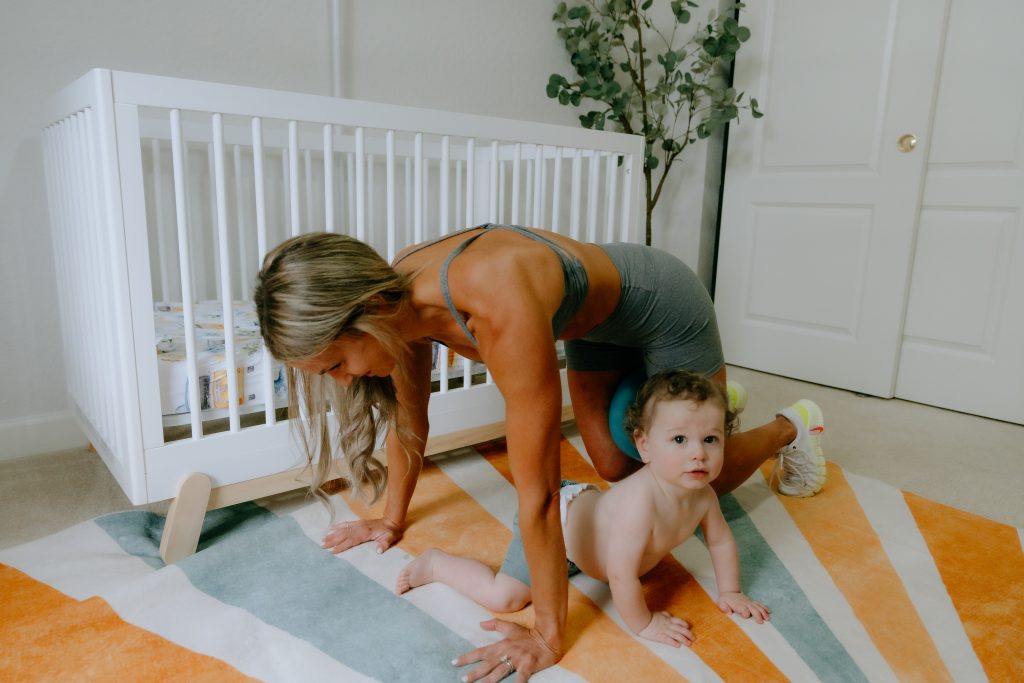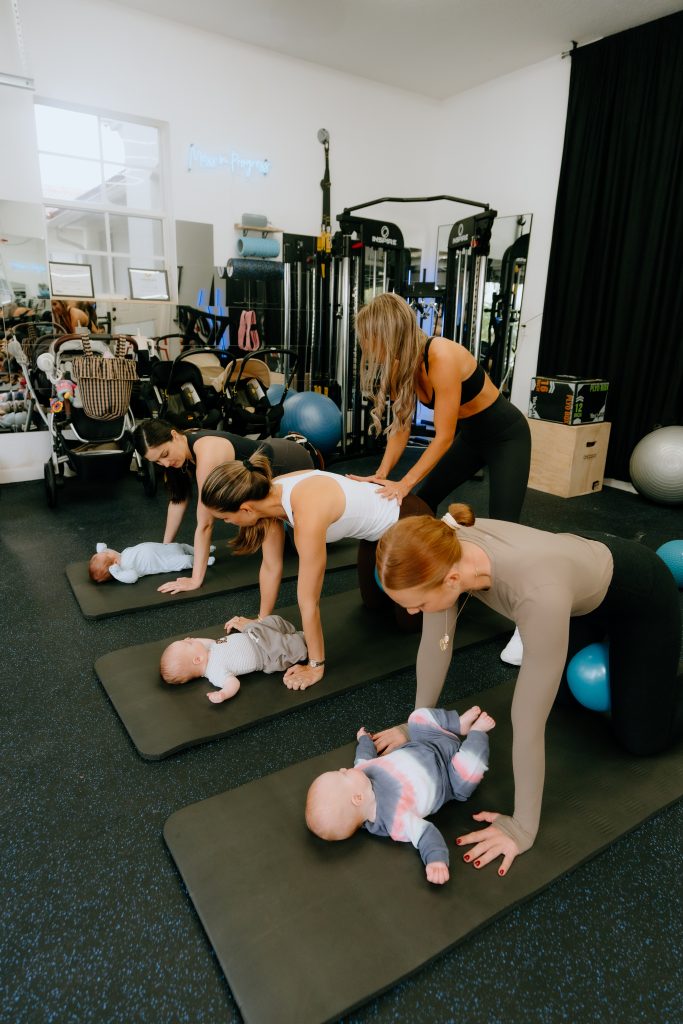The Power of 360 Breathing:
Why It Matters for Core Strength and Pain Relief

In my gym, I often see a lot of bodies—especially prenatal and postpartum mamas—struggling with low back pain, chest tightness, upper trap discomfort, and shoulder pain. A common thread among these clients? Their breathing patterns. When I assess their breath, I frequently notice that they’re not fully expanding through the sides and back of their diaphragm.
Breathing seems like such a natural, automatic function that we don’t often think about it. But if our diaphragm isn’t expanding fully, it starts acting more as postural support rather than a tool for deep breathing. This has a ripple effect on the body, causing other muscles to overcompensate, which can lead to increased tension and discomfort
How 360 Breathing Works:
360 breathing, also called diaphragmatic breathing or circumferential breathing, involves expanding the ribcage and abdomen in all directions—front, sides, and back. When we breathe deeply and correctly:
- The diaphragm moves down, allowing for a full inhale that expands the core and pelvic floor.
- The psoas, quadratus lumborum (QL), and paraspinal muscles relax, reducing tension in the low back.
- The pelvic floor naturally lengthens and strengthens, promoting better function and reducing symptoms like leaking or pain.
- The neck, shoulders, and upper traps stay relaxed instead of tightening to compensate for a shallow breath.

Why Does 360 Breathing
Matter?
When the diaphragm isn’t expanding properly, the alignment of our entire core system gets thrown off. Other muscles—such as the chest, shoulders, and upper traps—step in to compensate, leading to discomfort and even dysfunctional movement patterns.
For prenatal and postpartum individuals, this is especially important. During pregnancy, the growing baby places upward pressure on the diaphragm, making it harder to expand fully. Postpartum, many women struggle with core weakness or dysfunction, and proper breathing is key to reestablishing core strength without excessive tension.
Some different methods to help increase your 360 breathing:
Forearm Childs Pose With Pilates Ball Under Belly
Why It Works: The curved surface of the ball allows the spine to lengthen, giving the ribs more room to expand. Forearms on the ground help reduce tension in the traps and chest, directing the breath into the back and sides.
Best For: People who have trouble feeling expansion in their back due to an extended spine or rib flare.
Superband Quadruped 360 Breathing
Why It Works: The band provides proprioceptive feedback, encouraging better posterior and lateral rib expansion while reducing overuse of the chest and upper traps. The slight rounding of the spine shifts the ribs into a better position for full diaphragmatic breathing, making it easier to access true 360° expansion.
Best For: People who struggle to get air into their back ribs, have rib flare, or tend to breathe only into the chest and belly.
Side Lying With Pilates Ball Under Low Ribs
Why It Works: The ball provides gentle compression, giving direct feedback to the ribs, encouraging lateral and posterior expansion.
Best For: People who overuse their upper traps and chest when breathing or have restricted oblique/QL mobility.
Hooklying (Supine 90-90) with Feet on the Wall
Why It Works: Lying on the back with hips and knees at 90° helps stack the diaphragm and pelvic floor, reducing tension in the back and allowing better posterior and lateral rib expansion. Adding a gentle exhale before the inhale can further improve expansion.
Best For: Those with difficulty feeling true diaphragmatic breathing or who experience low back tightness when trying to breathe deeply.
Breathing correctly may seem simple, but it’s a game-changer for core strength, mobility, and pain relief. For anyone dealing with chronic tension, low back pain, or postpartum recovery, integrating 360 breathing into daily life can help restore balance and improve movement.
Next time you take a deep breath, ask yourself—are you truly expanding in all directions? If not, it’s time to start training your breath just like you train your body.